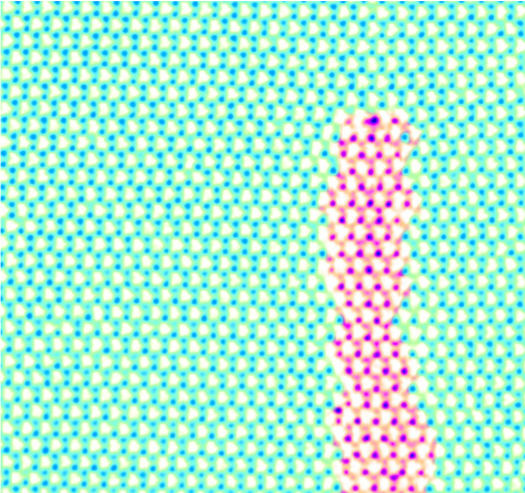 Cornell University researchers and collaborators have discovered – somewhat accidentally – a method for inserting a one-dimensional (1D) semiconductor channel into the “fabric” of a material that is only a few atoms thick.
Cornell University researchers and collaborators have discovered – somewhat accidentally – a method for inserting a one-dimensional (1D) semiconductor channel into the “fabric” of a material that is only a few atoms thick.
Two-dimensional (2-D) materials such as molybdenum disulfide (MoS2) and tungsten diselenide (WSe2) can be likened to two fabrics with differing thread counts. Where two different fabrics meet, not all the threads line up. The “loose threads” are easily removed and replaced with a new colored thread woven cleanly into the material – these are new 1 D wires.
The ability to control atom-sized features (1-D wires) and the properties of those features (conductivity and semi-conductivity) hold great promise for next-generation electronics such as atomically-thin and flexible computer chips.